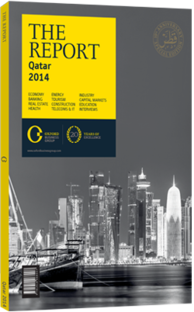Under construction: Raising capital to invest in evolving petrochemicals and downstream production industries
The petrochemicals industry has come a long way, building from virtually no base to exporting about 10m tonnes of chemicals, polymers and fertilisers per annum, according to the Qatar Chemical and Petrochemical Marketing and Distribution Company (Muntajat). In the past two years stakeholders have announced several major investments. In May 2013 Qatar Petroleum (QP) and RasGas ( jointly owned by QP and ExxonMobil) signed a joint venture to build Ras Laffan 2, which is set to double RasGas’s production of downstream products like naphtha, jet fuel, gas oil and petroleum gas. The existing Laffan Refinery 1 began operating in 2009 and has a production capacity of 146,000 barrels per day (bpd). The Laffan Refinery 2 project is set to expand on the success of the first plant, bringing Qatar’s total production capacity to 300,000 bpd. Owned by QP (80%), Total (10%) and several other firms, the $1.5bn project is set to come on-line in 2016.
Progress
Two more petrochemicals facilities, Al Sejeel and Al Karaana, are also on the way. In December 2013, QP and Qatar Petrochemical Company ( QAPCO) awarded the Al Sejeel Petrochemical Complex’s front-end engineering and design (FEED) contract to Italy’s Tecnimont for an undisclosed amount. The project, with an estimated total value of $5.5bn, is expected to come on-line in 2018. It is set to be Qatar’s first mixed-feed complex, meaning it will be able to process condensates from multiple feedstocks, Mohammed Yousef Al Mulla, QAPCO’s vice-chairman and CEO, told local English-language daily The Gulf Times in December 2013. The plant’s two production lines are set to produce over 1m metric tonnes per annum (mtpa) of high-density polyethylene, 1m mtpa of low-density polyethylene varieties, 760,000 mtpa of polypropylene and 83,000 mtpa of butadiene. Polypropylene has industrial applications in textiles, packaging and other consumer products, and butadiene is used to make synthetic rubber for products such as car tyres. Progress has been brisk on the forthcoming Al Karaana Petrochemicals Complex as well. Stakeholders QP and Shell awarded US-based engineering and construction firm Fluor the FEED contract for an undisclosed amount in March 2013, according to Fluor. A mixed feedstock project like Al Sejeel, Al Karaana is set to produce roughly 2m tonnes per annum of linear alpha olefins (or alkenes), oxo alcohol units and other fuel additives. These projects aim to raise annual petrochemicals output to 23m metric tonnes by 2020, Mohamed bin Saleh Al Sada, minister of energy and industry, said.
Domestic Interest
While QP is working with global partners to develop new petrochemicals complexes, the company is also exploring ways to expand the petrochemicals industry with domestic capital. In December 2013 QP officials announced plans to launch an initial public offering (IPO) for its petrochemicals subsidiary, Mesaieed Petrochemical Holding Company. Mesaieed owns shares of three Qatari petrochemicals firms, including 49% of both Q-Chem I and Q-Chem II, as well as a 52.5% stake in the Qatar Vinyl Company. The offering, which was open to Qatari nationals only, released a 26% share of the company to the public. Shares were offered at about QR10 ($2.74) each.
In addition to voicing their hopes that Qatari citizens would invest, the authorities said they would give 750 shares to nationals with disabilities and those receiving social insurance. Qatari banks have also rallied behind the IPO, with the likes of Qatar Islamic Bank, Qatar International Islamic Bank, Al Khaliji and Doha Bank offering financing schemes for Qataris. Mesaieed sold all 323.19m shares on offer, raising its QR3.2bn ($876.5m) target, according to QP officials. Mesaieed’s success should bode well for the bourse. The Qatar Exchange is gearing up for an influx of capital after May 2014, when index compiler MSCI will upgrade the stock market’s status from “frontier” to “emerging”. The government plans to execute QR50bn ($13.7bn) worth of IPOs in the next 10 years, Al Sada said in December 2013. If capital continues flowing from both domestic and international sources, the state’s energy players should have no trouble finding funds for future expansion.
You have reached the limit of premium articles you can view for free.
Choose from the options below to purchase print or digital editions of our Reports. You can also purchase a website subscription giving you unlimited access to all of our Reports online for 12 months.
If you have already purchased this Report or have a website subscription, please login to continue.

